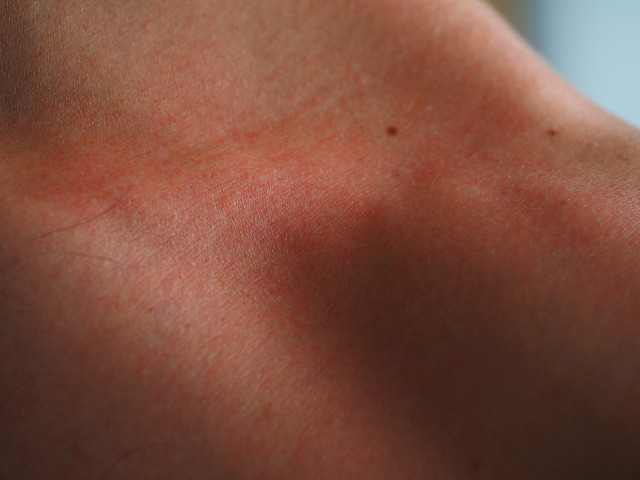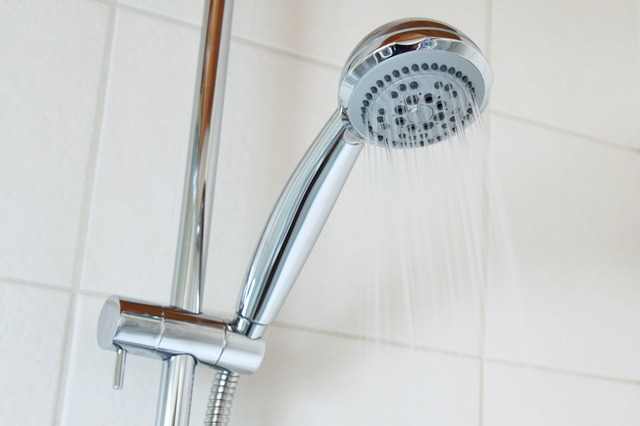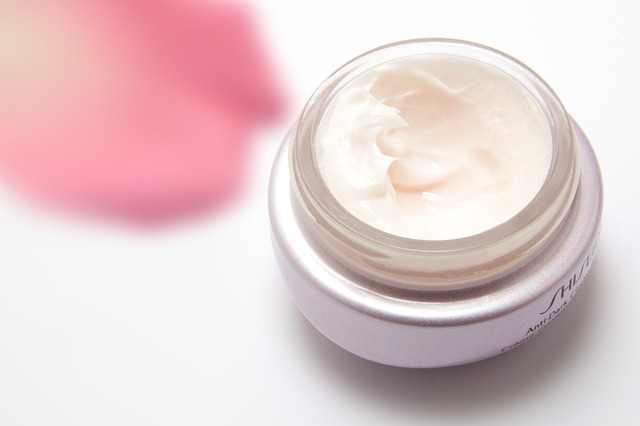Hell’s itch also called sunburn itch or suicide itch, is an acute, unimaginable itching that occurs in short, intense waves. In most people, the condition will last from anywhere between 12 and 48 hours, after which it disappears.
Read through to understand the meaning, causes, treatment, and how you can protect your skin from this painful condition.
Hell’s itch meaning
Dr. Heidi Fowler describes hell’s itch or sunburn as an intense inflammatory response of the skin to excessive exposure to the sun. She adds that the itch represents the body’s reaction to tissue damage that results from long exposure to the sun.
Hell’s or devils itch refers to a painful red itchiness that commonly emerges a few days or hours after a sunburn. Those affected say that the symptom of this condition goes beyond that of a typical sunburn.
The itch goes deep into the skin, and it is not uncommon for it to be accompanied by peeling skin on the part of the skin affected. It causes a lot of discomfort in the short-term. With most of those affected saying it can be hard to calm the itchy sensation down.
After the sunburn clears, the itch clears. It is not clear if, once affected, one can get the symptom with every sunburn. But once your skin is back to normal, one needs to be very careful to:
- Check the amount of time spent out in the sun
- Always cover your skin up clothing and
- Wearing a high SPF sunscreen
Always keep an eye on any changes in your skin and consult with your doctor of changes in your skin and painful, irritating symptoms after being exposed to the sun.
What causes hell’s itch?
Debra Sullivan, Ph.D. aggress that it is not clear what happens or who may be predisposed to this condition. She continues that there is nothing to indicate that people who have had sunburned itch continue to experience it along with every sunburn.
So the biggest question remains- What causes hell’s itch? The truth is anybody can get this painful itch. How severe the symptoms are will depend on the amount of melanin on the skin and how long one spends exposed to the harmful UV rays from the sun.
The physiological reason for the excruciating pain of a devil’s itchy after sunburn lies in the nerve endings of the skin on the affected part of the body. The dermis contains numerous nerves ending that facilitate the sensory function of the skin.
When the UV rays damage the epidermis from the sun, the dermis is exposed. It is at this point the nerve endings are exposed, and you can feel the excruciating itch.
The risk factors for having this condition include:
- Having a fairer skin with less melanin pigment that helps prevent sun damage. People with darker skin have more melanin that helps block the UV rays.
- Spending a lot of time exposed to the sun. This is common in people who spend most of the time in the mountains.
Hell’s itch after sunburn

Human skin has a protective pigment known as melanin. This pigment is produced in the skin by cells known as melanocytes. It comes in different shades depending on the genetic makeup of a given individual.
Melanin acts as the natural body sunscreen. Apart from giving the dark skin color, melanin protects the skin from harmful ultraviolet rays. Individuals who spend most of their time out in the sun naturally have more melanin production for skin protection.
After long exposure to the sun without protection, hell’s itch occurs as a result of more UV rays from the sun penetrating your skin. The rays penetrate when they are more and stronger than your natural melanin pigments can handle.
Those with more melanin can thus stay in the sun longer than those who have less of these pigments. After a sunburn, a severe itch is your body’s reacting to damages that might have occurred on your skin tissues as a result of such exposure.
According to health line, hell itch symptoms often go beyond those of a typical sunburn. They say that a sunburn itch will typically show up anywhere from 24 to 72 hours of being in the sun. Sunburn is common in the areas that get a lot of sun exposure, such as the shoulders and back.
Hells itch compared to a typical sunburn is painful, causes severe itching, skin peeling, and in most cases, it is hard to treat.
How long does hells itch last
How long hell’s itch last will often vary from one person to the other. The duration of the itchy will depend on:
- How sever the sunburn was
- The amount of time spent exposed to the sun’s harmful UV rays
- The amount of melanin pigment in the skin
People with fairer skin generally have less melanin pigment compared to those with darker skin. Devil’s itchy on people with light skin tends to last longer as compared to those with dark skin.
In most people, the painful, severe itch will often manifest a day or two after the sunburn. If untreated, it can continue to about a week then clear on its own. There are, however, some cosmetic products that can be used to speed up the healing process of a sunburned skin to get rid of the itch.
How to treat hell’s itch
Though the pain can be extremely unpleasant, hell’s itch isn’t life-threatening. As such, it can be treated at home with simple self-care methods. Most people have reported relief from taking a hot shower. If you choose to use this method to treat the itchy, be careful not to overheat the water.
Over the counter, topical ointment can be used to relieve the itching. When choosing such creams, we recommend you go for those containing 10% benzocaine or 1% hydrocortisone cream.
Avoid using any lotion containing salicylic acid. Also, avoid scratching the affected area of skin as this can worsen the itch. Make sure to wear sunscreen when going out in the sun.
See a dermatologist or a general practitioner if the itch persists or seems to worsen with time.
Hells itch remedies
Devil’s itch is not life-threatening. Simple remedies may help relieve the pain and speed up the time it takes to heal the damage caused by the harmful UV rays.
The following remedies will offer relief for the itch.
1. Hot shower

A hot shower can be the solution for severe hell’s itch that fails to respond to treatment. When using this remedy, do not use harsh soap or scrub your skin. Hot water can dry your skin, and using soap can make the itch worse.
2. Cold compress
A cold compress can offer instant relief for mild sunburn itch. All you have to do is dip a clean cotton towel in cold water, squeeze to get rid of the excess water then gently hold the affected area of skin. Repeat this until the itch fades away.
3. Apply Aloe Vera Gel
Apple cider vinegar is one of the most effective natural remedies you try on itchy skin. The remedy is acidic, and using it might help restore the normal pH balance of the skin. ACV is considered a strong antiseptic that can help fight off skin infections.
We highly recommend organic cold-pressed Aloe Vera gel (Check price on Amazon)
For sunburned skin, the most effective way to apply the remedy is to use a sprayer. This way, you avoid rubbing the skin, which might worsen the itch.
Sunburn itch relief
4. Peppermint oil
Applying peppermint oil can offer instant relief sunburned skin. Peppermint is rich in cooling effects that make it a great remedy to use an itchy skin. For children and those with very sensitive skin, make sure to dilute the remedy before applying it.
Our favorite is Peppermint Essential Oil by Essentially KateS (Check price on Amazon)
If you are trying peppermint oil on the skin for the first time, try it on a small part of the skin to find out how your skin responds to the remedy. If you notice no reaction, you can then proceed to apply it over the affected area of the skin.
5. Oatmeal bath
When all your body is affected, the best remedy to offer relief for the itch is an oatmeal bath.
- Add a cup of crushed oatmeal powder in a bathtub
- Gently stir to make sure all the powder dissolves
- Now soak your body in the solution for 15 minutes
- Do this in 5 hours
6. Baking soda paste
You can also use a baking soda paste to relieve mild sunburn itch on the shoulder, on the back, and hands. Baking soda is said to possess anti-inflammatory and soothing properties that can help relieve sunburn itch on the skin.
- Add 2 tablespoon of baking soda in a cup
- Into it, add some water, and gently mix to achieve a fine paste.
- Now gently apply the paste and leave it on for some minutes
- Take a warm shower to rinse off the paste
- Repeat this until the itching stop
Extreme sunburn itch relief
For severely sunburned itch relief, you can use the following remedies.
a) 1% hydrocortisone cream

Hydrocortisone are creams used to soothe itching, reduce redness, and itching. When used on the skin, they stop the skin cells from releasing inflammatory substance which calms the skin. If you are to use this cream for sunburn itchy, buy the one containing at least 1% hydrocortisone.
b) Oral antihistamine pills
At times the itching can be caused by immune-system cells releasing histamine. Histamines are chemicals in the body that causes allergy symptoms, such as itching. Taking an antihistamine can suppress such reaction, thus temporarily relieve itching and swelling.
c) Topical anesthetic cream, spray or ointment
This medication works by blocking nerve signals making you unable to feel pain. If you choose to use anesthetic sprays to relieve the extreme itch, shake the can well and hold it at least 4 inches from your skin.
When using anesthetic gel and ointment, apply the cream on dry skin, and gently run to evenly distribute it.
d) Ibuprofen
Ibuprofen, ex. as Advil, can help reduce the swelling, reduce the pain, and lower the fever that often accompanies the itch. It is often used as an anti-inflammatory drug.
e) Multivitamins
Multivitamins pills will help boost your immune system, which in turn helps speed up the time it takes to heal and get rid of the sunburn itch.
f) Drink plenty of fluids to remain hydrated
Keep your body hydrated by drinking plenty of water and eating fresh fruits when your skin is dehydrated; the itch can be even more severe.
How to prevent hell’s itch
Like all other skin conditions, hell’s itch can be prevented. The best way to prevent this from happening is to use caution when spending time exposed to the sun. Though not medical confirmed, it has been said that people who experience a devils itch may have some genetic predisposition.
People with fairer skin are more susceptible to sunburn. For such people, the key is to find out how much sun exposure one can comfortably tolerate and making sure not to surpass this limit. You can also do the following to prevent sunburn itch.
- Before going out, always ensure you wear sunscreen containing a broad spectrum SPF that protects against UVA and UVB rays
- Avoid prolonged exposure to sun
- Use an umbrella when going out
- Drink plenty of water and other fluid to keep your skin soft and hydrated.
Remedies:
- Everything you need to know about sunburn itch: http://www.healthline.com/health/outdoor-health/sunburn-itch-relief-hells-itch#overview1
- Most effective remedies for itching: http://www.healthline.com/health/outdoor-health/best-remedies-for-itching#1


